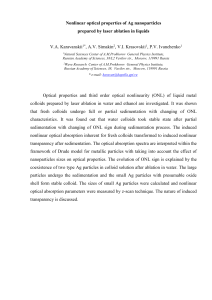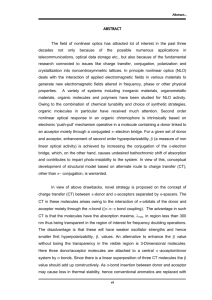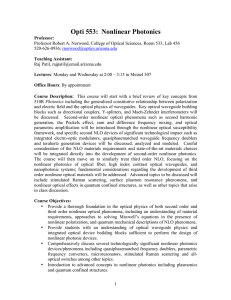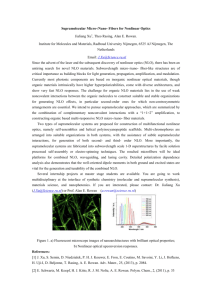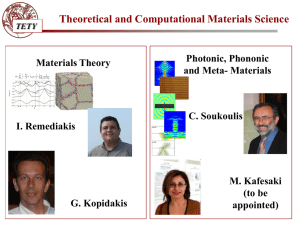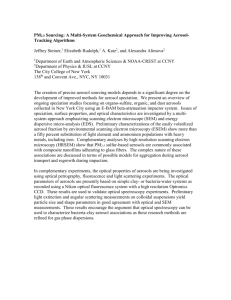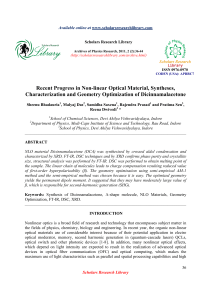Nonlinear optical properties of metallic, semiconducting and organic
advertisement
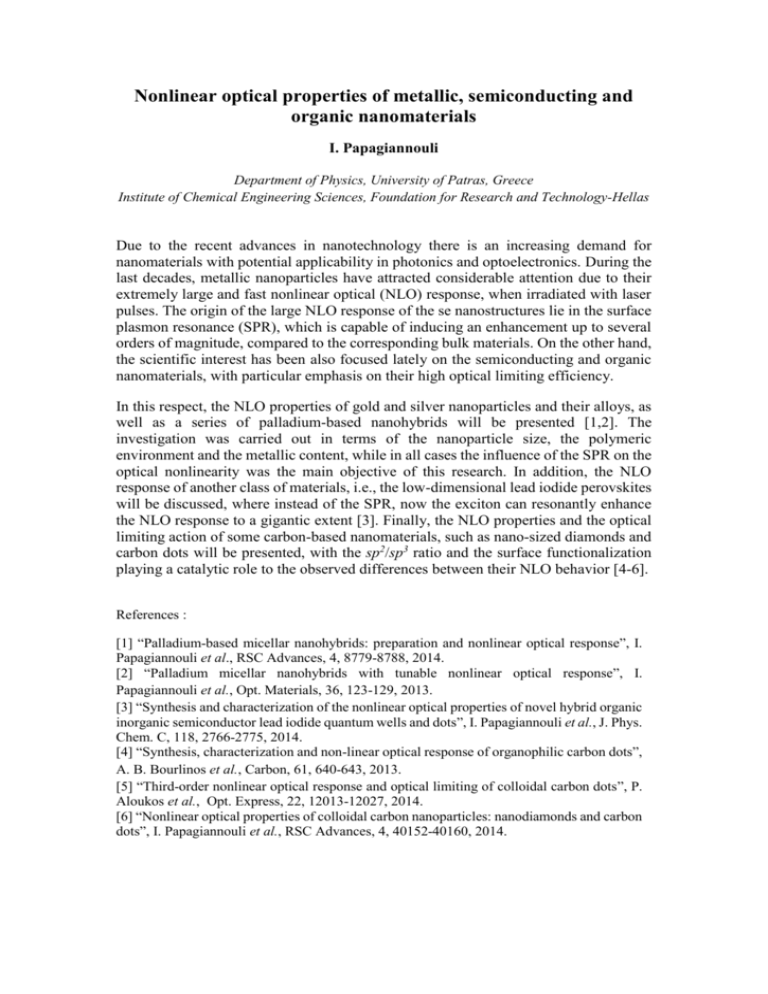
Nonlinear optical properties of metallic, semiconducting and organic nanomaterials I. Papagiannouli Department of Physics, University of Patras, Greece Institute of Chemical Engineering Sciences, Foundation for Research and Technology-Hellas Due to the recent advances in nanotechnology there is an increasing demand for nanomaterials with potential applicability in photonics and optoelectronics. During the last decades, metallic nanoparticles have attracted considerable attention due to their extremely large and fast nonlinear optical (NLO) response, when irradiated with laser pulses. The origin of the large NLO response of the se nanostructures lie in the surface plasmon resonance (SPR), which is capable of inducing an enhancement up to several orders of magnitude, compared to the corresponding bulk materials. On the other hand, the scientific interest has been also focused lately on the semiconducting and organic nanomaterials, with particular emphasis on their high optical limiting efficiency. In this respect, the NLO properties of gold and silver nanoparticles and their alloys, as well as a series of palladium-based nanohybrids will be presented [1,2]. The investigation was carried out in terms of the nanoparticle size, the polymeric environment and the metallic content, while in all cases the influence of the SPR on the optical nonlinearity was the main objective of this research. In addition, the NLO response of another class of materials, i.e., the low-dimensional lead iodide perovskites will be discussed, where instead of the SPR, now the exciton can resonantly enhance the NLO response to a gigantic extent [3]. Finally, the NLO properties and the optical limiting action of some carbon-based nanomaterials, such as nano-sized diamonds and carbon dots will be presented, with the sp2/sp3 ratio and the surface functionalization playing a catalytic role to the observed differences between their NLO behavior [4-6]. References : [1] “Palladium-based micellar nanohybrids: preparation and nonlinear optical response”, I. Papagiannouli et al., RSC Advances, 4, 8779-8788, 2014. [2] “Palladium micellar nanohybrids with tunable nonlinear optical response”, I. Papagiannouli et al., Opt. Materials, 36, 123-129, 2013. [3] “Synthesis and characterization of the nonlinear optical properties of novel hybrid organic inorganic semiconductor lead iodide quantum wells and dots”, I. Papagiannouli et al., J. Phys. Chem. C, 118, 2766-2775, 2014. [4] “Synthesis, characterization and non-linear optical response of organophilic carbon dots”, A. B. Bourlinos et al., Carbon, 61, 640-643, 2013. [5] “Third-order nonlinear optical response and optical limiting of colloidal carbon dots”, P. Aloukos et al., Opt. Express, 22, 12013-12027, 2014. [6] “Nonlinear optical properties of colloidal carbon nanoparticles: nanodiamonds and carbon dots”, I. Papagiannouli et al., RSC Advances, 4, 40152-40160, 2014.


